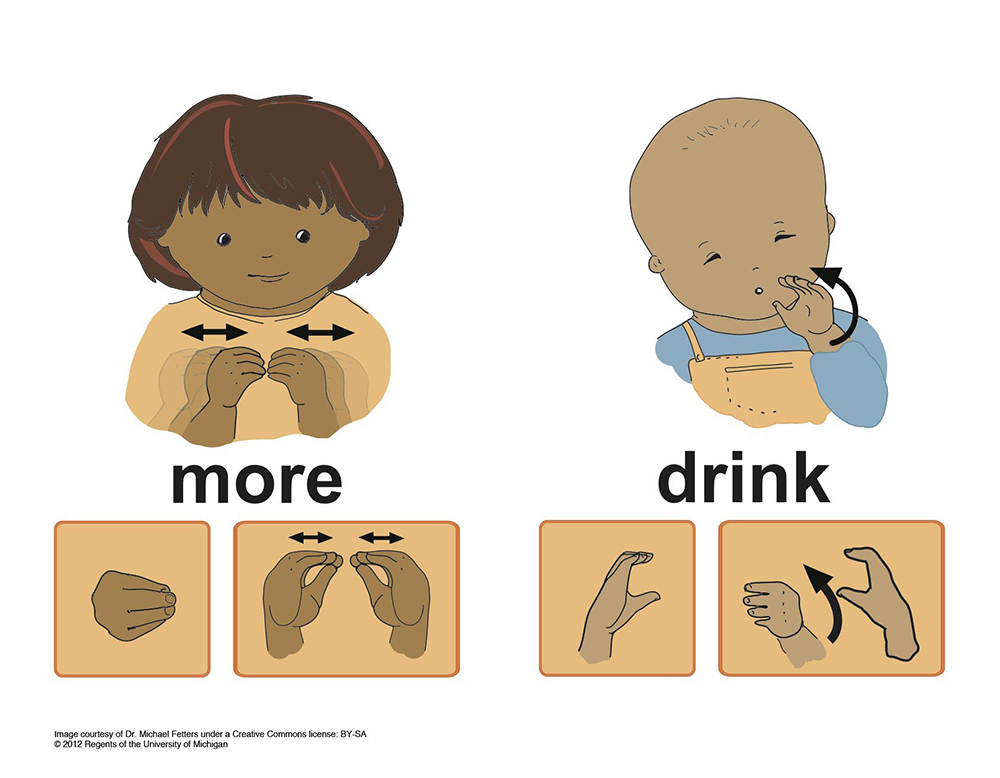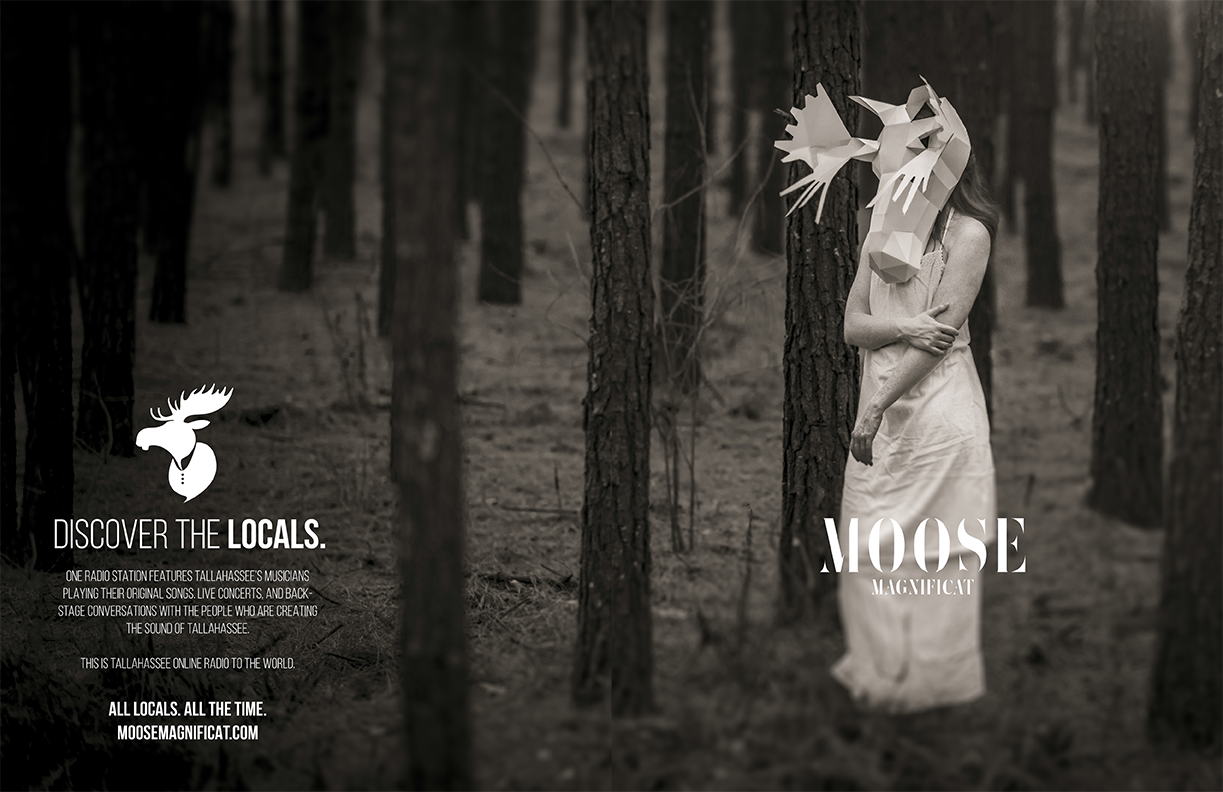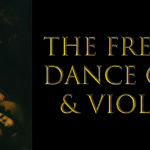by Ursula Perano
Of all of the firsts that come in the beginning of a child’s life, there is something uniquely paramount about their first word. For the child, it opens a gateway into a world of conversations. For parents, it is the key to finally being able to understand what their bundle of joy has been trying to communicate all along. After months of tears and tantrums without any pinpointed source, the first word commences a new, relieving phase of understanding.
However, some families are making an effort to shorten that bridge. Baby Sign Language is the method of teaching infants symbolic manual gestures as a means for communication prior to their verbal development. The signs are taught by parents modeling them to a child, while simultaneously presenting or acting out what the sign itself represents. The idea being that eventually the baby will come to associate that sign with that specific meaning and that they will learn to present the sign themselves, giving them a mechanism to communicate their wants and needs even if they have not yet learned to do so verbally. For example, a parent may want to teach the sign for “milk.” To do this, they would model the sign for milk to their baby upon the presentation of a bottle. Creating a connection between that sign and milk itself. Therefore, in the future the baby will begin to flash that sign on their own if milk is what they specifically need at that time.
Why to Sign
Of course, the most obvious benefit to signing is the ability to communicate with your child earlier on in their life. But the less apparent aspect of this is the increased parent-child bond that this communication can cultivate. Not only does signing allow for a baby to feel understood and acknowledged where otherwise they had not, but it additionally allows parents preemptive insight into their child’s thoughts and personality. This sort of relationship early on can furthermore lead to a smoother gradient of emotional development throughout a child’s opening stages of life.
Beyond this bond, extensive research has shown that signing substantially benefits a child’s cognitive development as well. An eight-year long study funded by the National Institute of Health tracked the language development of 100 children, half of which signed as an infant and half of which had only been given auditory lessons in language. At 11 months, the children who had signed were further along in their verbal development and had a larger vocabulary those who had not. Following up at the age of three, the signing group’s lead had narrowed but not diminished. They still showed a noticeably firmer hold of the verbal English language, despite the fact that most at that point has already resigned their signs completely.
Finishing up, the study evaluated all 100 of the children once they reached eight years old. Both sets of children were presented with IQ tests, in an attempt to track their general cognitive development. Overall, the signers ultimately scored 12 points higher on average than the non-signers, putting them in the top 25% of eight year olds. The non-signers as a group tested to be close to average, thus serving as further evidence of the long-term benefits that signing can bring to a child’s life.

Getting Started
For families looking to really invest in the signing experience, there are plenty of kits available for purchase online that will provide learning materials such as flashcards, posters, books and DVDs. However, if you’re up for being a little thrifty, there are plenty of free resources out there to help you begin.
First and foremost, YouTube will be your best friend in this endeavor. A simple search for “baby sign language” will present you with hundreds of videos modelling every sign you can think of. However, this many signs at once can lead to an information overload for both you and your baby. Don’t forget, your little one isn’t the only one who has to memorize all these new gestures. You are going to have to absorb just as much as them. So to make the process easier, try learning signs in categories first. Narrow your results by searching for “baby sign language food” or “baby sign language family’ and focus on mastering one section at a time. Throughout the results you will also find videos made for your baby to watch independently. These can serve as additional teaching aides, as well as a model for you on how to instruct your baby yourself.
Nevertheless, no matter how thoroughly you know a set of signs, at one point or another the motion for a specific one is going to evade you. So instead of allowing yourself to be thrown into a frenzy over not being able to remember, a helpful trick can be to place materials around the house that you can utilize in times of need. Creating cheat sheets to place in relevant areas can be a stress-free solution to this problem. For example, having a sheet on the fridge that shows the signs for different types of food, or a sheet on the door to the backyard that shows the signs for animals or your child’s outdoor toys. You can easily create these sheets by collecting photos from Google Images and pasting them in formation onto a blank document. As an alternative though, if you’re feeling crafty, you can turn it into an art project for you and your baby to share. Not only will this make for a fun experience, but it will also leave your baby thoroughly engaged and enthusiastic about beginning to sign!
If at the end of all the internet searches you’re still looking for a more personalized approach, then seeking out in-person instruction may be a viable option for you. Classes for BSL concentrate on helping parents effectively learn how to sign, so that they can successfully teach their children to do so as well. To find an instructor in the Tallahassee area, visit fun4tallykids.com, click on the “Programs & Classes” section, and then go to “5 & under.” There you will find further information about how to find a certified BSL instructor and how to best get in touch with them.

Seeing Results
The point at which a baby starts to sign independently is very much a case by case situation. But on average, six months tends to be the time that most will begin. Prior to that age babies typically have not yet developed the dexterity and muscle coordination needed to conduct BSL’s gestures on their own. Additionally, most BSL programs recommend giving your child two months of consistent signing lessons and exposure before expecting to see results.
Meaning that if you’re wanting to have your baby signing as soon as possible, four months would be a good time to start teaching. Nonetheless, if your child has already passed six months that does not mean that signing cannot still be useful to them. Despite the fact that babies tend to verbally speak their first words at 9-12 months, these words are often extremely basic ones such as “no,” “mama,” or “dada.” Most infants will not begin to add words for objects into their vocabulary until nearly 18 months, meaning that up until that time a few signs for things like “drink,” “food,” or “bed” could serve as absolute lifesavers for both you and your little one.
Tips for Success
- There are a lot of signs out there, and your baby does not need to know them all. You’ll quickly find that BSL has developed a sign for absolutely everything. Giraffes, kites, fog, etc. There is no need to take the time to worry about learning these random, rarely used words. Focus you and your baby’s energy on vocabulary that you’ll implement on a daily basis.
- Always be sure to still verbally announce the words that you are signing. After a point signing may become second nature, and you may begin to present them in silence. It is essential for you to avoid this habit. Continuing to teach your child language through speaking as well is a necessary counterpart to signing. Refraining from doing so will result in a negative effect on your child’s overall development.
- Using facial expressions can be an effective way of helping your baby learn signs. Emotions allow for babies to have something additional to associate a sign with, which creates another connection for them to remember a sign by. For example, making a happy face with the sign for “mama” or a sad face with the sign for “hurt” allows them to further understand the message you are trying to relay.
- Be patient. Every baby learns at their own pace, so do not become discouraged if yours takes a little longer to respond to the program. Their first few months of life are going to be precious no matter what, so do not allow signing to be a cause of stress. Just be consistent, continue to use the resources available to you, and enjoy the experience!












